List of men's national association football teams
This is a list of the men's national association football teams in the world. There are more nations with football teams than for any other sport,[1] with teams representing 191 of the 193 UN member states, as well as several dependent territories, sub-national entities, and states who are not members of the United Nations. This list divides teams into two main groups:
- Teams which are either members of Fédération Internationale de Football Association (FIFA), the world's football governing body (211 teams), or have membership in a FIFA-affiliated continental confederation without being members of FIFA (12 teams).
- Teams who are not members of FIFA or any continental federation, but which represent sovereign states. This group includes United Nations members and observer states, as well as states who are not members of the UN (11 teams).
This list excludes other teams, which generally play outside FIFA's recognition. Excluded teams include those who represent ethnic groups, sub-national entities and dependent territories other than those recognized by FIFA or its confederations, competitors at the Island Games, unrecognized states, separatist movements, and pseudo or micro-nations.
Members of FIFA affiliated confederations
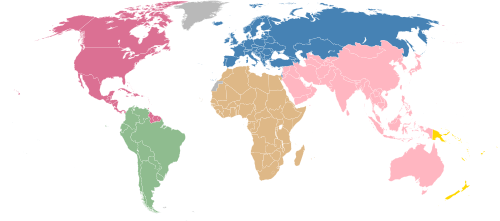
This section lists the current:
- 211 men's national football teams affiliated to FIFA, through their national football associations.
- 12 men's national football teams who have membership in one of FIFA's affiliated continental confederations, but are not members of FIFA.[2]
FIFA members are eligible to enter the FIFA World Cup and matches between them are recognized as official international matches. Based on their match results over the previous four-year period, the FIFA World Rankings, published monthly by FIFA, compare the relative strengths of the national teams.
Some national teams who are members of a confederation but not FIFA members compete in confederation-level and subregional tournaments. These teams, however, are not allowed to participate in the World Cup.
The six confederations are:
- Asia – Asian Football Confederation (AFC)[note 1]
- Africa – Confederation of African Football (CAF)[note 1]
- North and Central America and the Caribbean – Confederation of North, Central American and Caribbean Association Football (CONCACAF)
- South America – Confederación Sudamericana de Fútbol (CONMEBOL)
- Oceania – Oceania Football Confederation (OFC)
- Europe – Union of European Football Associations (UEFA)
FIFA runs the World Cup as a tournament for national teams to find the world champion. Each confederation also runs its own championship to find the best team from among its members:
- AFC – Asian Cup
- CAF – Africa Cup of Nations
- CONCACAF – CONCACAF Gold Cup
- CONMEBOL – Copa América
- OFC – OFC Nations Cup
- UEFA – European Championship
While not a confederation in itself, the Union of Arab Football Associations (UAFA) coordinates football activities between Arabic-speaking countries. All 22 national governing bodies that form UAFA are also members of both FIFA and either the AFC or CAF. National teams from UAFA member countries are noted in the list below.
AFC (Asia)
Due to the geographical size of Asia, the AFC is subdivided into five sub-federations:
- West Asian Football Federation (WAFF) – represents nations at the western extremity of the continent, except Iran.
- East Asian Football Federation (EAFF) – represents nations in Northeast Asia, plus Guam and Northern Mariana Islands.
- Central Asian Football Federation (CAFF) – represents nations in Central Asia, plus Iran.
- South Asian Football Federation (SAFF) – represents nations in South Asia.
- ASEAN Football Federation (AFF) – represents nations in Southeast Asia, plus Australia.
- 1: National governing body was formerly a member of OFC (1966–2006)
- 2: National governing body is a member of UAFA
- 3: Official name used by FIFA and AFC for People's Republic of China (PRC)
- 4: Official name used by FIFA and AFC for Republic of China (ROC, Taiwan); national governing body was a member of OFC from 1975 to 1989
- 5: Official name used by FIFA for Islamic Republic of Iran
- 6: Official names used by FIFA and AFC for Democratic People's Republic of Korea (DPRK, North Korea) (a) and Republic of Korea (ROK, South Korea) (b)
- 7: National governing body is an associate member of AFC but not a FIFA member
- 8: National governing body was formerly a member of OFC (2005–2009)
- 9: Official name used by FIFA and AFC for national team representing the State of Palestine
CAF (Africa)
Due to the geographical size of Africa, CAF is divided into five regional federations:
- Council for East and Central Africa Football Associations (CECAFA) – represents nations generally regarded as forming the regions of East Africa and some nations of Central Africa.
- Council of Southern Africa Football Associations (COSAFA) – represents nations generally regarded as forming Southern Africa, as well as island states off the coast of Southern Africa.
- West African Football Union/Union du Football de l'Ouest Afrique (WAFU/UFOA) – represents nations in West Africa.
- Union of North African Federations (UNAF) – represents nations regarded as forming North Africa.
- Union des Fédérations du Football de l'Afrique Centrale (UNIFFAC) – represents some of the nations that form Central Africa.
- 1: National governing body is a member of UAFA
- 2: Official name used by FIFA for Democratic Republic of the Congo; official name used by CAF is RD Congo
- 3: National governing body is an associate member of CAF, but not a FIFA member
- 4: National governing body is a member of ConIFA
CONCACAF (North America, Central America and the Caribbean)
The CONCACAF federation is divided into three regional federations that have responsibility for part of the region's geographical area:
- Caribbean Football Union (CFU) – represents all nations in the Caribbean, plus Bermuda and three nations in South America.[note 2]
- North American Football Union (NAFU) – represents the teams of Canada, Mexico and the USA.
- Union Centroamericana de Fútbol (UNCAF) – represents the seven nations of Central America.
- 1: National governing body is a full member of CONCACAF but not a FIFA member
CONMEBOL (South America)
OFC (Oceania)
UEFA (Europe)
National teams not affiliated to FIFA confederations
The national football teams included in this section are not members of FIFA, or of any of its affiliated continental confederations. The teams are not eligible to enter the FIFA World Cup or any continental confederation championships. FIFA's statutes do not allow member teams to compete against these sides without FIFA's prior permission.[3]
This section lists:
- 5 teams representing sovereign states who are members or observers of the United Nations.
- 6 teams representing states which are not members of the United Nations.
Unaffiliated United Nations states
There are seven United Nations member and observer states which are not members of FIFA or any of its affiliated continental confederations. Five of them, however, have fielded national teams in unofficial friendlies, Olympic-level tournaments (such as the Pacific Games or Micronesian Games), or in tournaments held outside the auspices of FIFA. These teams are listed below.
1: National governing body is a member of ConIFA
2: The United Kingdom national team has only played unofficial friendly matches under the name "Great Britain". Otherwise, the United Kingdom is represented in FIFA- and UEFA-organized football by the teams of its constituent countries: England, Northern Ireland, Scotland, and Wales (these teams are listed in the UEFA subsection above). See also Great Britain Olympic football team and UK National Football teams.
Nauru is a UN member state with no recorded official football team, though there are reports of unofficial Nauru teams playing friendly matches on at least two occasions. Another UN member state, the Marshall Islands, has no recorded national football team.
Unaffiliated non-UN states
Three states with limited international recognition, de facto sovereign states, are full members of FIFA and are listed above: the Republic of China (as Chinese Taipei) and Palestine, which are members of FIFA and the AFC; Kosovo, which is a member of FIFA and UEFA.
None of the remaining de facto sovereign or partially recognized states are members of FIFA or any of its affiliated continental confederations. Six have fielded national teams in non-FIFA football matches and unofficial friendlies:[4][5][6][7]
1: ConIFA currently designates this team by its former name, Nagorno-Karabakh.[8]
2: In addition to participating in non-FIFA football tournaments and in unofficial matches against FIFA-affiliated nations, Northern Cyprus participated in the 1980 Islamic Games football competition.
The national associations representing all six of these teams are members of ConIFA, an organization for teams representing unrecognized states, subnational regions, and stateless minorities. [9]
Others
FIFA's entry criteria state that:
Any association which is responsible for organising and supervising football in all of its forms in its country may become a member of FIFA. Consequently, it is recommended that all member associations involve all relevant stakeholders in football in their own structure.
The main condition for joining FIFA is thus general international recognition as a nation state and membership of the UN.[10] However, this rule is not applied retroactively,[11] and 26 of FIFA's members are not internationally recognised sovereign nations.[note 3]
Non-sovereign associations may still join FIFA or its affiliated confederations in specific circumstances. FIFA have offered exceptions for associations representing a dependency where the application apply for membership is authorised by the association in its parent state.[11][12] The New Caledonia team was admitted under this regulation in 2004 on the grounds of the distance of New Caledonia from its 'parent' nation, France.[13] The applications for membership by Gibraltar, a territory of the UK and Kosovo, a sovereign state with limited international recognition, were both initially rejected by FIFA in line with the above policy.[14][15] However, the Court of Arbitration for Sport has rejected this decision [14] and both teams were accepted in May 2016.[16]
A variety of other national, separatist, sub-national, pseudo-national, and ethnic teams have formed international football organizations outside FIFA's jurisdiction, and play in international tournaments against each other.[13] The Confederation of Independent Football Associations (ConIFA), was founded with the aim of regularising non-FIFA international football, by having a two-year international tournament cycle, with the ConIFA World Football Cup in even numbered years, and continental tournaments in odd-numbered years.[17] This developed the work of the now-defunct N.F.-Board (Nouvelle Fédération-Board), founded in 2001. [18] ConIFA aims to help unrecognised national teams gain recognition, but also to provide a platform for representative teams of regions or diasporas, which do not have a place in a system of international football based on nation-states.[19] In some cases, participation in non-FIFA football has been a first step for teams who later sought (and in some cases, achieved) the right to participate in matches sanctioned by FIFA or one of its affiliated continental confederations. For example, both Kosovo and Gibraltar played in non-FIFA football tournaments before being recognized by FIFA and UEFA.
Former national football teams
These national teams no longer exist due to the dissolution of the nation or territory that they represented. Only national teams that were once members of FIFA are listed below.
| Preceding team | Successor team(s) (inherited position/results) |
Other successor team(s) | Notes |
|---|---|---|---|
| Represented Czechoslovakia until its dissolution into the Czech Republic and Slovakia in 1993.[21] Competed as Representation of Czechs and Slovaks for the remainder of their 1994 World Cup qualifying games.[22] | |||
| Represented the Saarland Protectorate from 1950 to 1956 before its union with the Federal Republic of Germany.[23] | |||
(officially Germany FR) |
Represented West Germany between 1950 and 1990, before reunification with East Germany.[24] | ||
(officially Germany DR) |
Represented East Germany between 1952 and 1990, before reunification with West Germany.[24] | ||
| Represented Ireland from 1882. On the secession of the Irish Free State (later Republic of Ireland) from the United Kingdom in 1922. As with the team of the Irish state, the team continued picking players from across the Island of Ireland until 1953 when it became Northern Ireland under pressure from FIFA.[25] | |||
| Represented the Federation of Malaya from 1953 until its union with Sarawak, North Borneo and Singapore to form Malaysia in 1963. Singapore, which gained independence in 1965, retained its preexisting national team. | |||
| Represented Tanganyika until its union with Zanzibar as Tanzania in 1964. Zanzibar is an associate member of CAF and so is not a member of FIFA. | |||
| Represented the British Mandate for Palestine from 1934 until the formation of the State of Israel in 1948. A team representing the Palestinian territories was formed in 1953 and was admitted into FIFA in 1998. | |||
(officially Vietnam) |
Represented South Vietnam from 1949 until 1975. North and South Vietnam maintained separate football teams from 1954 to 1975. The current Vietnam national football team is considered a successor of the South Vietnam team as North Vietnam was not a FIFA member. | ||
(officially Yemen AR) |
Represented North Yemen from 1965 until its union with South Yemen in 1990. | ||
(officially Yemen PDR) |
Represented South Yemen from 1965 until its union with North Yemen in 1990. | ||
| Represented the United Arab Republic from 1958 to 1961 until the secession of Syria. Was considered a continuation of the previous Egypt national football team, which became its successor team. The team continued to be known as the United Arab Republic until 1970. | |||
| Represented the Soviet Union from 1924 until its dissolution in 1991. This was considered a continuation of the team that had previously represented the Russian Empire. | |||
| Represented the Commonwealth of Independent States and Georgia from January 1992 until the end of the Euro 1992 tournament, in order to take the Soviet Union's place in that competition. | |||
| Represented Yugoslavia between 1920 and 1992, before the dissolution of the Socialist Federal Republic of Yugoslavia into Bosnia-Herzegovina, Croatia, Federal Republic of Yugoslavia, Macedonia and Slovenia | |||
(later renamed Serbia and Montenegro) |
Represented the Federal Republic of Yugoslavia, known as Serbia and Montenegro after 2003, from 1992 until its dissolution into Serbia and Montenegro in 2006. Kosovo declared independence from Serbia in 2008, and its national team was accepted into UEFA and FIFA in 2016. | ||
| Aruba became a separate nation in 1986 and was recognized by FIFA in 1988. The former team represented the Netherlands Antilles until the dissolution of the country in 2010. Formerly known as "Curaçao", this name was restored in March 2011 when the new constituent country of Curaçao took the Netherlands Antilles' place in FIFA and CONCACAF. The teams representing Bonaire and Sint Maarten are full members of CONCACAF, but not of FIFA. |
Some historically short-lived states and dependent territories, for example, Manchukuo also had their own football teams.
New names
In addition to the above, other nations have been renamed:

.svg.png)
.svg.png)
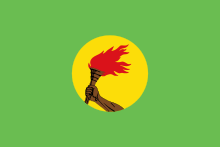
.svg.png)

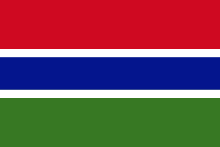
.svg.png)
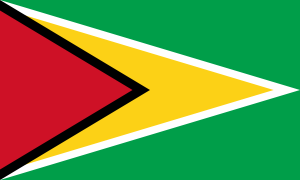
.svg.png)
.svg.png)

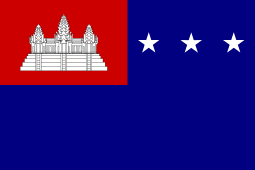
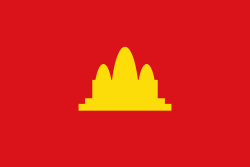

.svg.png)


.svg.png)

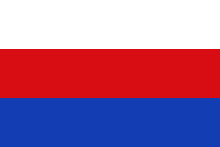


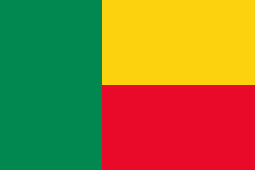



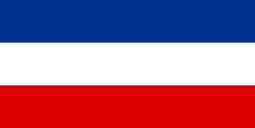



.svg.png)

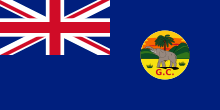











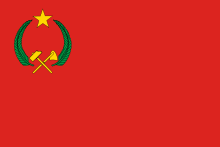

.svg.png)

.svg.png)

.svg.png)
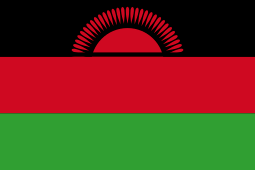


.svg.png)

.svg.png)
.svg.png)



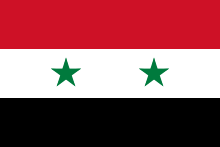
.svg.png)
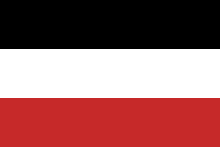

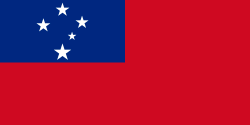

1: Still commonly called Ivory Coast in English-speaking countries
See also
Notes
- 1 2 Additionally 22 nations in Africa and Asia belong to the Union of Arab Football Associations (UAFA) in addition to their respective regional confederations.
- ↑ Guyana and Suriname are independent nations, and French Guiana is an overseas department of France
- ↑ The FIFA-affiliated football teams that belong to non-UN members are:
- 1 associated state of New Zealand
- 4 constituent countries of the United Kingdom
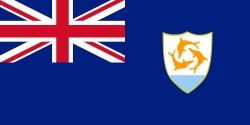
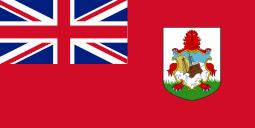
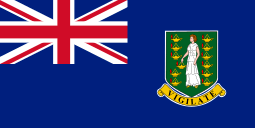
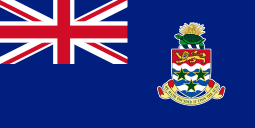
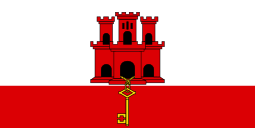
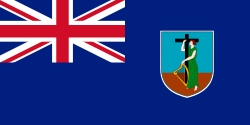

- 1 constituent country of the Kingdom of Denmark
- 4 unincorporated territories of the United States
- 2 overseas territories of France
- 2 special administrative regions of China
References
- ↑ Brown, Michael. "Biggest Global Sports". Retrieved 11 September 2015.
- ↑ These are displayed in the main list in italics.
- ↑ "FIFA Statutes: July 2012 Edition" (PDF). FIFA. pp. Article 83. Retrieved 7 January 2013.
- ↑ "Abkhazia founds national football team". Vestnik Kavkaza. 2012-12-03. Retrieved 2016-07-07.
- ↑ "Archived copy". Archived from the original on 7 June 2014. Retrieved 10 June 2014.
- ↑ "Somaliland". wordpress.com. 31 July 2015. Retrieved 4 July 2016.
- ↑ "Non-FIFA Football Updates: South Ossetia make international bow in Abkhazia loss". nonfifafootball.blogspot.co.uk. Retrieved 4 July 2016.
- ↑ http://www.conifa.org/en/rankings/
- ↑ "Members". CONIFA. Retrieved 15 June 2018.
- ↑ Outcasts: The Lands That FIFA Forgot Menary, Steven. 25–08–10. Accessed 27–09–10
- 1 2 FIFA Statutes FIFA, April 2016
- ↑ CAS rules in favour of Gibraltar – Outcasts Blog. 05–09–11. Accessed 13–10–11
- 1 2 Menary, Steven. 2007. When is a National Team not a National Team? Sport in Society 10(2), 195–204
- 1 2 "Gibraltar Scores Against Spain: Court Orders FIFA To Admit GFA "Without Delay"". The Spain Report. Retrieved 3 May 2016.
- ↑ "Kosovo admitted as 55th member of European governing body UEFA". Sky Sports. Retrieved 3 May 2016.
- ↑ Homewood, Brian. "Gibraltar, Kosovo accepted as members of FIFA". Reuters. Retrieved 17 May 2016.
- ↑ "ConIFA aim to lead non-FIFA football forward". Back Page Football. Retrieved 10 June 2014.
- ↑ "Football Associations Members of the N.F.-Board". N.F.-Board. Retrieved 31 March 2016.
- ↑ Guardian Football Weekly. "Unai Emery unveiled, England's new captain and Liverpool's big final – Football Weekly Extra". Retrieved 30 May 2018.
- ↑ "Czech Republic Country Info". FIFA.com. Retrieved 18 July 2013.
- ↑ "Czech Republic - Profile". FIFA. Retrieved 18 July 2013.
- ↑ "World Cup Ends On Belgian Note". Prague Post. Retrieved 18 July 2013.
- ↑ "Saarland 1950-1955". When Saturday Comes. Retrieved 18 July 2013.
- 1 2 "Germany: When East and West became one". FIFA. Retrieved 18 July 2013.
- ↑ Byrne, Peter (1996). Football Association of Ireland: 75 years. Dublin: Sportsworld. p. 68. ISBN 1-900110-06-7.
Sources
- "List of FIFA Associations". FIFA.